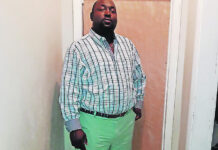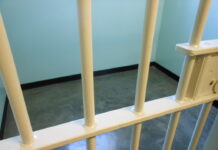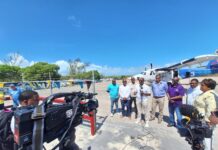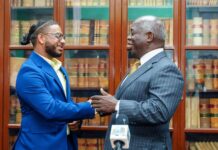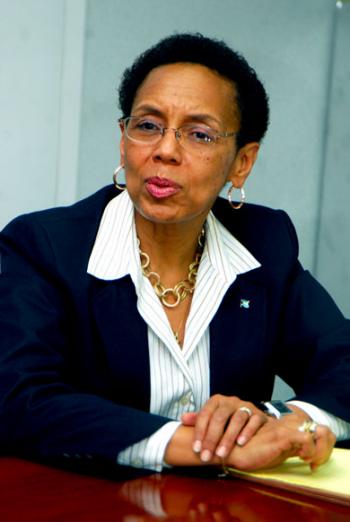
Stem Cell Contribution
by Sen. Hon Allyson Maynard-Gibson
Bahamas Attorney General
It’s a new day for the Bahamas – the dawn of an exciting new era. An era of the visionary leadership of the Rt. Honourable Perry Gladstone Christie, who today is the only non U.S. person speaking at the ceremony commemorating the “I have a dream speech”.
This landmark bill and the regime it creates opens up a new frontier for medical research and therapy; the promotion and advancement of science and the promotion and study of biomedical ethics and related subjects and also many other related areas.
What are stem cells: this is what Minnis AND THE FNM Senators should have been explaining –
Stem cells are the body’s master cells. Stem cells can renew themselves (a process called self-renewal), and they can also make a variety of other kinds of cells.
Explore Current Stem Cell Treatments
Scientists have been working with human adult stem cells — the stem cells found in specific tissues — for more than 40 years, compared to only a dozen years for human embryonic stem cells. As a result, the only stem cell treatments that have been proven to work well so far involve tissue stem cells, mainly those found in bone marrow and skin.
Transplanting bone marrow
Bone marrow transplants have been used since the 1950s to treat leukemia and other blood disorders. Bone marrow is the spongy material found in the center of your bones. Bone marrow, which resides mainly in the large bones like the hip bone and shoulder blade, holds caches of hematopoietic (blood-forming) stem cells that can give rise to all the cell types in the blood: e.g. red blood cells, white blood cells and platelets
Doctors use bone marrow transplants to replace the blood and immune systems of patients with certain blood cancers or other disorders. Transplanted blood-forming stem cells “home in” to the bone marrow and, once settled, begin rebuilding the patient’s supply of blood cells. Depending on the disease and the method used to harvest blood-forming stem cells, the stem cells begin producing new blood cells within 10 days to 6 weeks.
Healing burns with skin grafts
Skin grafts have been used for centuries, although no one knew exactly why they worked until fairly recently. Skin is particularly rich in stem cells because so much skin is lost through normal wear and tear; you shed thousands, or even millions, of dead skin cells every day. In mild cuts and burns, these stem cells work to repair the damaged tissue. In severe burns, though, the stem cells in the burn area are destroyed, so doctors have to take skin from an undamaged area.
STEM CELL THERAPY IN BLOOD DISORDERS AND SKIN GRAFTS HAS BEEN IMPLEMENTED FOR DECADES
SCs the capacity to be genetically coaxed to become a particular type of cell e.g. blood cells do not regenerate. As said above, the SCs in our bone marrow become various types of blood cells when needed. This is the basis of bone marrow transplants
The exciting new era in world medicine is the recognition that SCs can be genetically manipulated to become the cell needed for treatment. The Bahamas is well placed to participate in this new frontier of medicine.
There are ethical issues and that is why it is so important to have a regulatory regime. That is what this Bill and the Regulations create. This Government is not prepared to allow people to set up SC treatment and therapy in the absence of a regulatory regime that meets the highest international standards. The project that the FNM approved was stopped pending the establishment of a world class regulatory regime. I have spoken to the Freeport investor who congratulated the Christie administration.
Cher – GYPSIES TRAMPS AND THIEVES – HYPOCRITES
Minnis himself recommended and sat in a Cabinet that approved a SC clinic in Freeport – IN THE ABSENCE OF ANY REGULTORY REGIME. NO REGULATORY REGIME.
In so doing they were reckless: as to the country’s reputation and they showed reckless disregard for health and safety of those being treated [including Bahamians].
WIDE CONSULTATION IN SETTING UP A WORLD CLASS REGIME
During April to May 2013, the Stem Cell Research and Therapy Bill Team visited stakeholders in New Providence and Grand Bahama. The purpose of the visits was to for consultation and education. Eight (8) groups were visited, which were:
STAKEHOLDER GROUPS
• Senior Physician’s Meeting
• The Collage Of The Bahamas’ Science Lecturers
• The Bahamas Nurse’s Association
• Grand Bahama’s Medical Stake Holders
• The Bahamas Medical Association
• The Bahamas Chamber Of Commerce
• The Bahamas Dental Association
• The Bahamas Christian Council
OAG et al met twice with BCC and once with Civil Society. All questions were answered. The draft Bill and Regs were shared with the BCC and all questions answered. The main area of concern surrounded creating then destroying human embryos.
Many radio and TV shows also.
Goal: Make the Bahamas a highly-respected world leader in stem cell research and therapy
Scope: All aspects of stem cell research and therapy, including:
1. Clinical research (in humans)
2. Non-clinical research (in animals and in vitro)
3. Treatment of humans
3 Main Aspects of the Bill and Regulations:
1. Committee Oversight
a. National Stem Cell Ethics Committee
i. Comprised of highly qualified and respected national leaders and internationally-recognized experts
ii. Will ensure that stem cell research and therapy in the Bahamas meet best practices and international standards
iii. Will oversee the individual Scientific Review and Ethics Committees, and will review annual reports from them
b. Scientific Review Committees:
i. Each person who conducts stem cell research or therapy must obtain the review of a Scientific Review Committee
ii. This Committee will ensure that there is sufficient scientific merit for the research or therapy, and that those conducting it are qualified
c. Ethics Committees:
i. Each person who conducts stem cell research or therapy must also obtain the review of an Ethics Committee
ii. This Committee will ensure that all stem cell research and therapy is ethical
2. Substantive and Procedural Safeguards and Requirements
a. Prohibited Procedures: The Bill prohibits 9 procedures, such as those that involve:
i. creating and then destroying human embryos
ii. human reproductive cloning
iii. inappropriately combining human and animal materials
b. Licensing and Inspection: The Bill requires facilities and laboratories used for stem cell research and therapy to be licensed under the Hospital and Health Care Facilities Act, and to be subject to inspection and licensing fees, to be used to train or hire qualified inspectors
c. The Regulations:
i. Require that donors and patients be given informed consent
ii. Mandate reimbursement of donor costs and compensation for injuries
iii. Mandate different levels of Committee review, depending on the level of risk and of ethical concern; the National Committee will review research involving the highest levels of concern
iv. Impose requirements on the storage, transport, labeling, and disposal of, and equipment used with, stem cells
3. Enforcement and Accountability
a. The Minister of Health will have authority to suspend the operation of a licensed stem cell facility or laboratory
b. The Bill prohibits the export of stem cells unless approved in writing by the National Committee
c. Failure to comply with the Act or the regulations constitutes an offense punishable by a fine of $500,000 or imprisonment of 10 years, or both
d. The National Committee shall report annually to the Minister of Health on its activities and on the impact of stem cell research and therapy on The Bahamas
e. The report shall be laid on the table of both Houses of Parliament
Economic Burden and Self-Sustainability: The Bill and Regulations should not impose an economic burden on The Bahamas because they contain self-sustaining provisions:
1. The burden of arranging for a Scientific Review and Ethics Committee to review all research and therapy falls on the person or entity seeking to engage in that research.
a. The sophisticated investors now looking to initiate research and therapy in The Bahamas should have no problem handling those requirements
b. Young researchers in Universities are likely to be able to participate in Institutional Committees that will most likely be set up in each University or other research institute
c. The Government’s main burden regarding committee review will be to establish and maintain the National Committee; the Government is fully committed to supporting the National Committee with all the resources it needs. The University of Miami will assist also.
2. The licensing scheme will bring in additional revenue from facilities and laboratories. That money can be used to train qualified inspectors to ensure that stem cell operations in the country remain safe.
3. Creating new opportunities for young Bahamian scientists and entrepreneurs will generate additional revenue and business in the country.
4. Creating a world-class stem cell industry will attract addition revenue from medical tourism and from associated industries that will be needed to support the stem cell industry.
UNIVERSITY OF MIAMI VISIT
We intend to create in The Bahamas a center of excellence for stem cell research and therapy.
In pursuit of this goal, PM visited the University of Miami Miller School of Medicine, where he met with President Donna Shalala; Vice President and Dean of the Miller School of Medicine Dr. Pascal J. Goldschmidt; and the Chief Science Officer and Senior Associate Dean for Experimental & Regenerative Therapeutics and Director of the Interdisciplinary Stem Cell Institute Dr. Joshua M. Hare.
President Shalala, who as you know is a former Secretary of Health and Human Services, congratulated The Bahamas for putting in place a legislative framework for stem cell research and therapy. She and Drs. Goldschmidt and Hare immediately acknowledged collaboration and cooperation between University of Miami and The Bahamas has tremendous mutual opportunity and benefit, in medical treatment as well as in stem cell research and therapy. Dr. Hare has since visited Bimini with others from the UM where talks are being held with Genting.
We have agreed to the appointment of a Task Force whose remit will be to define potential areas of cooperation and to propose the means of implementation of such cooperation. We are especially looking forward to the early assistance of Dr. Hare’s Team in assisting with the regulatory regime. We also plan to collaborate with the University of Miami and others to establish at the University of The Bahamas a University of Miami Miller School of Medicine approved laboratory.
Collaboration with University of Miami and other universities in the United States, Canada and the EU could lead to Bahamians winning science prizes for discoveries in this cutting edge arena in medicine.
STEM CELL RESEARCH CONTROVERSY
Stem cell research has become one of the biggest issues dividing the scientific and religious communities around the world. At the core of the issue is one central question: When does life begin? At this time, to get stem cells that are reliable, scientists either have to use an embryo that has already been conceived or else clone an embryo using a cell from a patient’s body and a donated egg. Either way, to harvest an embryo’s stem cells, scientists must destroy it. Although that embryo may only contain four or five cells, some religious leaders say that destroying it is the equivalent of taking a human life. Inevitably, this issue entered the political arena.
In 1996, Congress passed a rider to the federal appropriations bill called the Dickey-Wicker amendment. Representatives Jay Dickey and Roger Wicker proposed banning the use of federal monies for any research in which a human embryo is created or destroyed. Federal monies are a primary source of funding for stem cell research. The amendment has been renewed every year since that time.
In 2001, President George W. Bush further restricted federal stem cell research. In an executive order, Bush stated that federal funds could only be used for research on human embryonic stem cell lines that had already been established (only 22 cell lines). This prevented researchers from creating more embryonic stem cell lines for research.
In 2009, President Barack Obama issued an executive order to expand embryonic stem cell research. Obama’s administration allowed federal funding of embryonic stem cell research if the following conditions applied:
The cell line was one of the 22 in existence during the Bush administration or was created from embryos that had been discarded after in vitro fertilization procedures.
The donors of the embryos were not paid in any way.
The donors clearly knew that the embryos would be used for research purposes prior to giving consent.
According to the administration, the new policy did not violate the Dickey-Wicker amendment because the money did not finance the creation of new embryos (they had already been created by private means) and did not finance the destruction of them.
In the event that a Bahamian or research institute has the opportunity to participate in research with a leading lab or institution using these 22 registered lines, then permission may be given to utilize these 22 registered lines.
Must prove it’s from one of those 22 lines. And must be accepted by a leading lab or research institution. Bahamian scientists should not be deprived of such an opportunity in this new scientific era.
DISEASES THAT CAN BE TREATED
What diseases can be treated using stem cells?
Cord blood stem cell transplants have already changed—and saved—thousands of lives around the world. They have already been used to treat more than 75 diseases, including numerous types of malignancies, anemia’s, inherited metabolic disorders and deficiencies of the immune system.
Acute Leukemia:
Acute Lymphoblastic Leukemia (ALL)
Acute Myelogenous Leukemia (AML)
Acute Biphenotypic Leukemia
Acute Undifferentiated Leukemia
Chronic Leukemia:
Chronic Myelogenous Leukemia (CML)
Chronic Lymphocytic Leukemia (CLL)
Juvenile Chronic Myelogenous Leukemia (JCML)
Juvenile Myelomonocytic Leukemia (JMML)
Myelodysplastic Syndromes:
Acute Myelofibrosis
Agnogenic Myeloid Metaplasia (myelofibrosis)
Polycythemia Vera
Essential Thrombocythemia
Lymphoproliferative Disorders:
Non-Hodgkin’s Lymphoma
Hodgkin’s Disease
Phagocyte Disorders:
Chediak-Higashi Syndrome
Chronic Granulomatous Disease
Neutrophil Actin Deficiency
Reticular Dysgenesis
Inherited Metabolic Disorders:
Mucopolysaccharidoses (MPS)
Hurler’s Syndrome (MPS-IH)
Scheie Syndrome (MPS-IS)
Hunter’s Syndrome (MPS-II)
Sanfilippo Syndrome (MPS-III)
Morquio Syndrome (MPS-IV)
Maroteaux-Lamy Syndrome (MPS-VI)
Sly Syndrome, Beta-Glucuronidase Deficiency (MPS-VII)
Adrenoleukodystrophy
Mucolipidosis II (I-cell Disease)
Krabbe Disease
Gaucher’s Disease
Niemann-Pick Disease
Wolman Disease
Metachromatic Leukodystrophy
Histiocytic Disorders
Familial Erythrophagocytic Lymphohistiocytosis
Histiocytosis-X
Hemophagocytosis
Inherited Erythrocyte Abnormalities
Beta Thalassemia Major
Sickle Cell Disease
Inherited Immune System Disorders
Ataxia-Telangiectasia
Kostmann Syndrome
Leukocyte Adhesion Deficiency
DiGeorge Syndrome
Bare Lymphocyte Syndrome
Omenn’s Syndrome
Severe Combined Immunodeficiency (SCID)
SCID with Adenosine Deaminase Deficiency
Absence of T & B Cells SCID
Absence of T Cells, Normal B Cell SCID
Common Variable Immunodeficiency
Wiskott-Aldrich Syndrome
X-Linked Lymphoproliferative Disorder
Other Inherited Disorders
Lesch-Nyhan Syndrome
Cartilage-Hair Hypoplasia
Glanzmann Thrombasthenia
Osteopetrosis
Inherited Platelet Abnormalities
Amegakaryocytosis / Congenital Thrombocytopenia
Plasma Cell Disorders
Multiple Myeloma
Plasma Cell Leukemia
Waldenstrom’s Macroglobulinemia
Other Malignancies
Breast Cancer
Wing Sarcoma
Neuroblastoma
Renal Cell Carcinoma
STEM CELLS: 10 DISEASES THAT STEM CELLS MIGHT SOMEDAY CURE—OR AT LEAST HELP TREAT:
1. Spinal cord injury.
2. Diabetes.
3. Heart disease.
4. Parkinson’s disease.
5. Alzheimer’s disease.
6. Lou Gehrig’s disease.
7. Lung diseases.
8. Arthritis.
9. Sickle cell anemia.
10. Organ failure.
IT’S A NEW DAY – THE DAWN OF A NEW ERA AND BAHAMIANS ARE POISED TO PARTICIPATE. This is why scientists like Dr. Dwayne Sands support this Bill.
It’s such a pity that so many in the FNM have shown themselves to be the people of whom Cher sings – who:
• Do not believe in Bahamians – i.e. creating opportunities for new Bahamian businesses, Bahamian scientists, Bahamian labs and other research facilities etc
• Do not care about what we Bahamians care about i.e. treatment of non communicable diseases, affordable medical care, a bright future for our children, the opportunity for Bahamians to be in top science labs in The Bahamas and elsewhere and the opportunity for a Bahamian Nobel Prize winner in science. We have Rhodes Scholars. We have Bahamians in top research facilities in US and around the world. We are opening the doors for a Nobel Prize winner within 50 years.
Bahamians are smart. Given the facts we arrive at the right result.
The facts are:
1. This is landmark legislation that establishes a world class regime
2. It’s the dawn of a new era in The Bahamas
3. A new era for research and therapy
4. A new era for affordable, breakthrough, life changing world class treatment
5. A new era for collaboration with international scientists and institutions
6. A new era for collaboration in the regulatory and ethics arenas
7. A new era for science and technology in The Bahamas
8. A new era to create centres of excellence
9. A new era for research and development and intellectual property
10. A new era for BELIEVING IN BAHAMIANS
AS WELL AS BEING ABOUT STEM CELL TREATMENT AND THERAPY, THIS IS A VISIONARY BILL ABOUT PATRIOTISM.
IT’S A NEW DAY – A NEW ERA BAHAMAS. TO GOD BE THE GLORY.
GOD BLESS THE COMMONWEALTH OF THE BAHAMAS.


